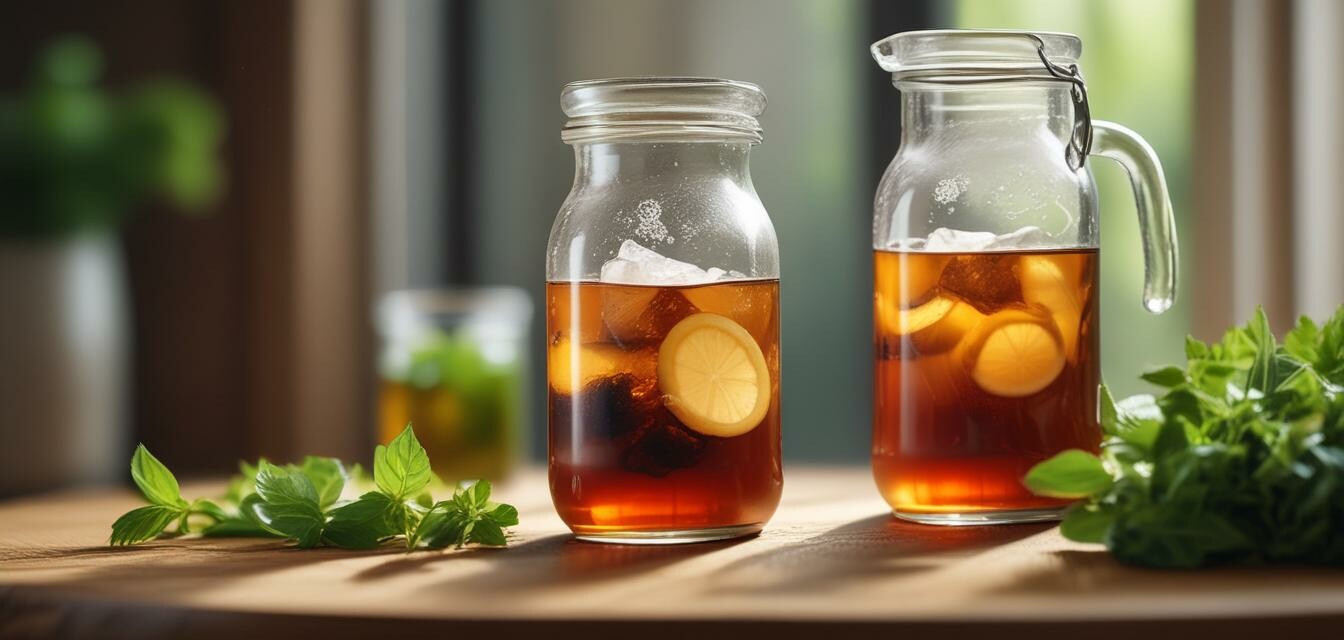
Mastering the art of cold brew tea
Key Takeaways
- Cold brew tea is a refreshing alternative brewed at room temperature or in the fridge.
- Different tea types yield distinct flavors and cooling effects.
- Longer steeping times lead to smoother, less astringent flavor profiles.
- Essential equipment includes a large jar or pitcher and a fine mesh strainer.
- Experimentation is key – try flavored teas or add fruit for a unique twist!
As the sun shines brighter and the days get warmer, it's the perfect time to explore the refreshing world of cold brew tea. Cold brew tea is an enjoyable and simple way to prepare this beloved beverage, offering a smoother and less astringent flavor than traditional hot brewing methods. In this article, we will delve into the benefits, best practices, and optimal tea types for cold brewing.
What is cold brew tea?
Cold brew tea involves steeping tea leaves in cold or room temperature water for extended periods, allowing the flavors to slowly infuse without the bitterness that can come with hot brewing. This method extracts essential oils and flavors from the leaves, resulting in a smoother and more refreshing drink.
Benefits of cold brew tea
- Smoother taste: Cold brewing reduces astringency and bitterness, making for a more pleasant drinking experience.
- Less caffeine: Generally, cold brew will have lower caffeine levels compared to hot brews, depending on steeping time and tea variety.
- Hydrating: Cold brew tea is a delicious way to stay hydrated, especially during hot days.
- Versatile: This preparation method allows for experimentation with various flavors, blends, and additions.
How to cold brew tea
Cold brewing involves a few simple steps and some patience. Here's how to do it:
- Choose your tea leaves. Popular options include black tea, green tea, and herbal blends.
- Measure the tea leaves. Typically, 1-2 tablespoons of loose leaf tea per cup of water is recommended.
- Combine the tea leaves and cold or room temperature water in a jar or pitcher.
- Let the mixture steep for 6-12 hours in the fridge or at room temperature.
- Strain the tea using a fine mesh sieve or tea strainer to remove the leaves.
- Serve over ice and enjoy! Add sweetener or fresh fruit for extra flavor, if desired.
Best teas for cold brewing
Not all teas are created equal when it comes to cold brewing. Here are some of the best types to use:
| Tea Type | Flavor Profile | Recommended Steeping Time |
|---|---|---|
| Green tea | Earthy and refreshing | 6-8 hours |
| Black tea | Rich and robust | 8-12 hours |
| Herbal tea | Fruity and floral | 6-12 hours |
| Oolong tea | Complex, smooth | 10-12 hours |
| White tea | Delicate and subtle | 8-10 hours |
Tips for successful cold brew tea
Beginner's tips
- Use high-quality loose leaf tea for the best flavor.
- Experiment with different tea blends and ingredients for your desired taste.
- Store your cold brew in an airtight container to keep it fresh.
- Adjust steeping times based on personal preference for taste strength.
- Try infusing with fruits or herbs for unique flavor combinations.
Conclusion
Cold brew tea is not just about cooling down on a hot day; it's an art that encompasses technique, timing, and personal taste. With its smooth, refreshing flavor and versatility, it allows tea enthusiasts to enjoy their favorite brews in an entirely new way. Whether you opt for flavored teas or pure varieties, the possibilities are endless. So grab your tea leaves and start experimenting - you’ll be well on your way to mastering the art of cold brew tea!
Pros
- Enhanced flavor quality
- Easy to make and adjust
- Healthier alternative to sugary drinks
- Highly adaptable for personal preferences
Cons
- Requires longer preparation time
- Some flavors may not be as strong